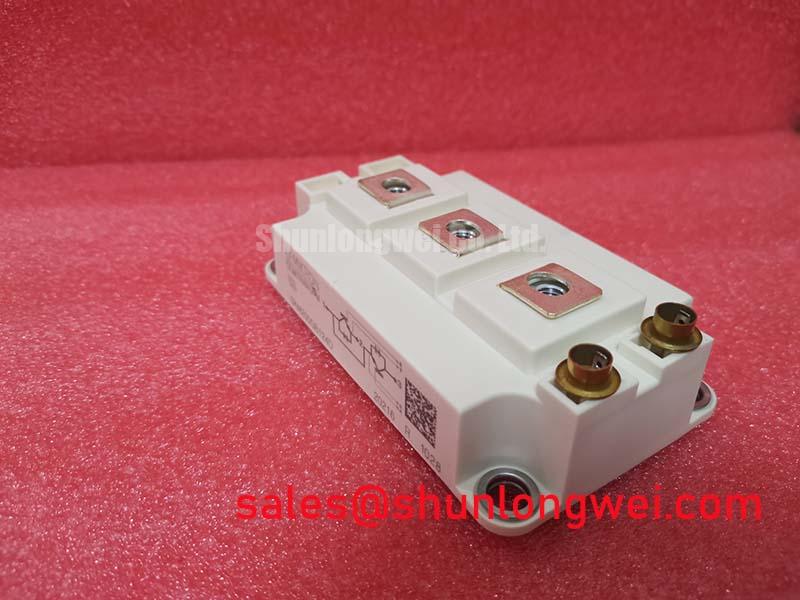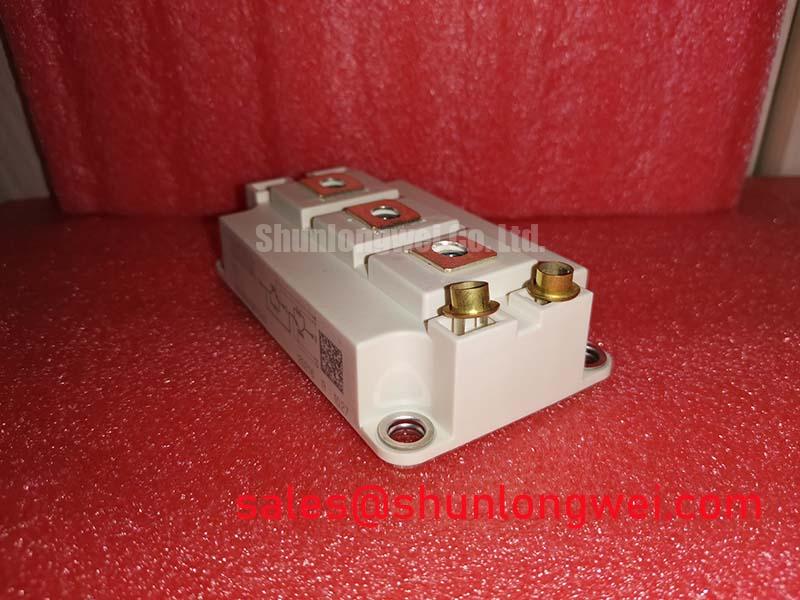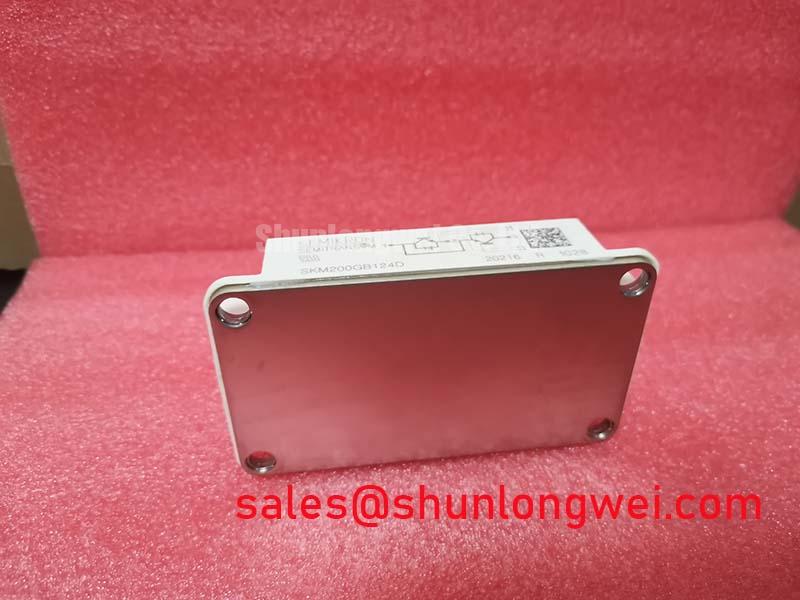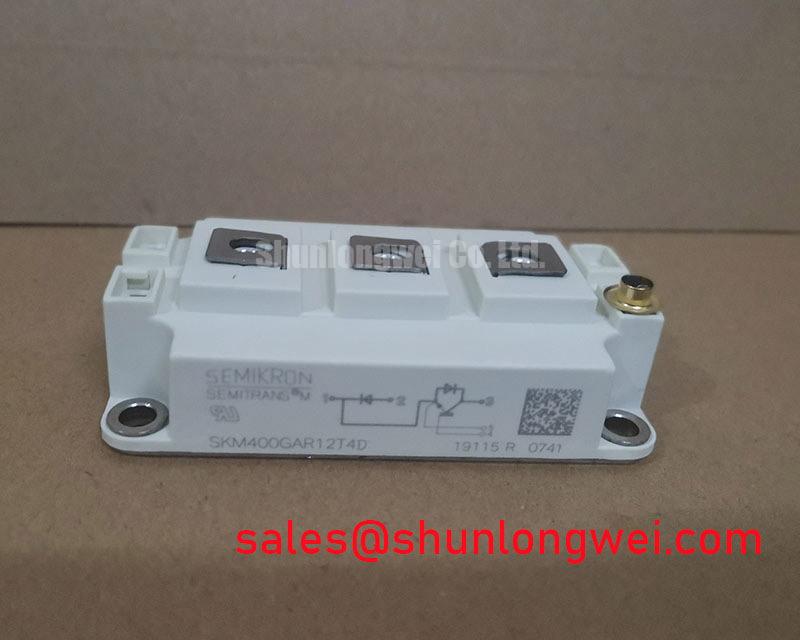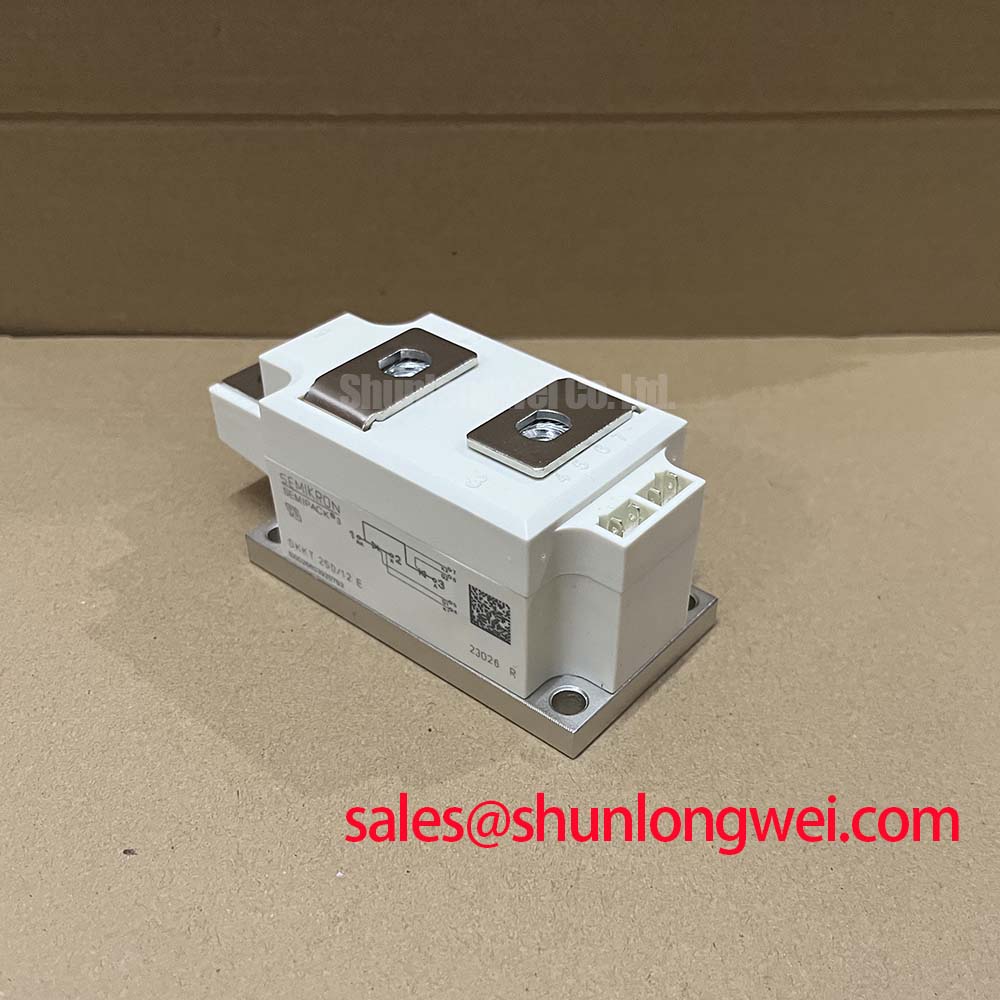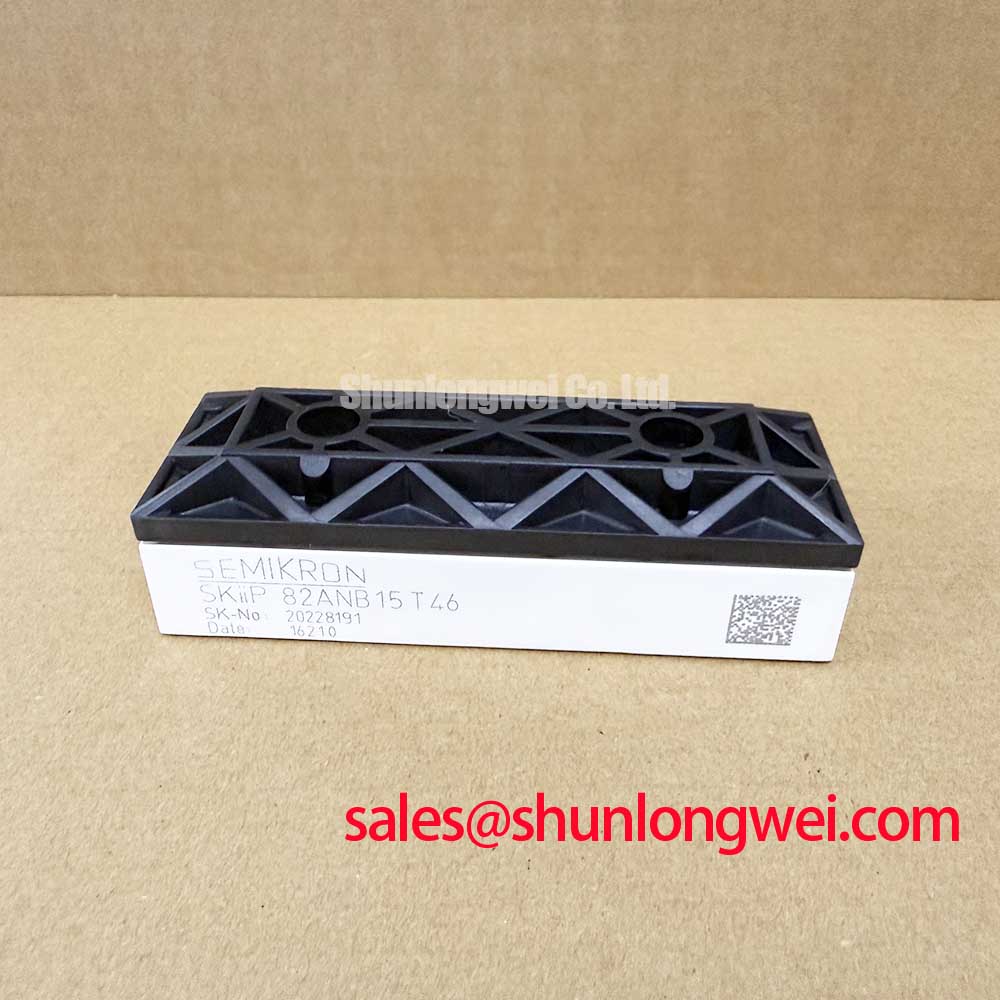Content last revised on November 18, 2025
SKM200GB124D: Engineering Analysis of a 1200V/200A NPT IGBT Module
A Robust Half-Bridge Solution for High-Reliability Power Conversion
The Semikron SKM200GB124D is a SEMITRANS 2 IGBT module engineered to deliver robust performance in demanding power conversion systems. This module's design centers on achieving low conduction losses and high operational reliability, making it a cornerstone for industrial drives and power supplies. It integrates a 1200V, 200A NPT IGBT with a CAL freewheeling diode in a half-bridge configuration. Key specifications include: 1200V | 200A | VCE(sat) 2.2V (typ). This translates to two primary engineering benefits: simplified thermal management and enhanced system durability. Answering a key question for designers, the module's integrated Al2O3 substrate provides high electrical isolation without complicating the mounting process. For cost-sensitive motor drives up to 75kW requiring low conduction losses, the SKM200GB124D is a benchmark for reliability.
Application Scenarios & Value
System-Level Benefits in Industrial Motor Drives and UPS
The SKM200GB124D is optimized for medium-frequency applications where thermal efficiency and long-term reliability are critical design criteria. Its primary application is in AC motor drives, where it serves as the core switching element in the power inverter stage. A common engineering challenge in these systems is managing the heat generated during the motor's operation, especially under heavy load conditions. The module's typical VCE(sat) of 2.2V at its nominal current directly addresses this issue by minimizing conduction losses—the primary source of heat in the IGBT at lower switching frequencies. This is analogous to reducing friction in a mechanical system; less energy is wasted as heat, meaning more power is delivered to the load. This efficiency allows engineers to design more compact systems with smaller, more cost-effective heatsinks, directly improving power density and reducing the bill of materials.
In Uninterruptible Power Supply (UPS) systems, the module's robust design and the soft-recovery characteristics of the integrated CAL (Controlled Axial Lifetime) freewheeling diode become paramount. The CAL diode minimizes voltage overshoots during turn-off, which reduces electromagnetic interference (EMI) and lessens the stress on other system components. While this model is well-suited for a wide range of applications, systems requiring higher current handling may consider the SKM300GB128D, which offers a higher current rating in a similar package. For comprehensive control, a dedicated gate driver like the SKHI 24 R is often paired with this module to ensure optimal and safe switching performance.
Key Parameter Overview
Specifications Translated into Engineering Advantages
The technical specifications of the SKM200GB124D are not just numbers; they are direct indicators of its performance and suitability for specific engineering challenges. The table below highlights key parameters and interprets their practical value in a power system design, a crucial step in decoding IGBT datasheets.
| Parameter | Value | Engineering Value & Interpretation |
|---|---|---|
| Collector-Emitter Voltage (Vces) | 1200 V | Provides a substantial safety margin for applications running on 400V to 575V AC lines, ensuring reliability against voltage transients and spikes common in industrial environments. |
| Continuous Collector Current (Ic @ Tc=25°C) | 285 A | Defines the module's maximum continuous current capability under ideal cooling. The more practical rating is Ic @ Tc=80°C (200A), which is the primary design reference for real-world thermal conditions. |
| Collector-Emitter Saturation Voltage (VCE(sat), typ. @ Ic=200A) | 2.2 V | Core Efficiency Metric: A lower VCE(sat) directly reduces conduction power loss (P = VCE(sat) * Ic), leading to lower operating temperatures and simplified thermal design. This is a key advantage of NPT IGBT technology in this current class. |
| Total Power Dissipation (Ptot @ Tc=25°C) | 1250 W | Represents the maximum amount of heat the module can transfer to the heatsink. This figure is fundamental for thermal calculations and ensuring the junction temperature remains within safe limits. |
| Thermal Resistance, Junction to Case (Rth(j-c)) per IGBT | 0.1 K/W | Key Reliability Indicator: This value quantifies the efficiency of heat transfer from the silicon chip to the module's baseplate. A low Rth(j-c) is critical for effective cooling. For more on this, see our guide on why Rth matters. |
| Isolation Voltage (Visol) | 2500 V (AC, 1 min.) | Ensures robust electrical isolation between the power circuit and the heatsink (chassis ground), critical for system safety and meeting regulatory standards like UL. |
Download the SKM200GB124D datasheet for detailed specifications and performance curves.
Industry Insights & Strategic Advantage
Leveraging Proven NPT Technology for Cost-Effective Reliability
In an industry increasingly focused on advanced technologies like wide-bandgap semiconductors, the Semikron SKM200GB124D demonstrates the enduring value of mature and optimized silicon technology. Its use of Non-Punch-Through (NPT) IGBTs provides a rugged, cost-effective solution with excellent short-circuit withstand capabilities. While newer trench-gate field-stop technologies may offer lower switching losses, NPT devices provide a favorable balance of performance, particularly in applications with switching frequencies below 20 kHz, such as standard motor drives. The strategic advantage for a system designer is leveraging a component with a long history of field reliability and a well-understood performance envelope. This reduces design risk and can shorten the development cycle, contributing to a lower total cost of ownership that extends beyond the initial component price.
Frequently Asked Questions (FAQ)
What is the primary benefit of the CAL freewheeling diode used in the SKM200GB124D?
The primary benefit is its "soft" recovery characteristic. This means the diode turns off smoothly, reducing abrupt changes in current (di/dt). This behavior minimizes high-frequency EMI and prevents destructive voltage overshoots, improving the reliability of the entire power conversion system without requiring complex Snubber Circuit designs.
How does the VCE(sat) of 2.2V impact heatsink selection?
A lower VCE(sat) directly reduces the heat generated from conduction losses. For a 200A load, this module dissipates approximately 440W (2.2V * 200A) as heat. A module with a higher VCE(sat), say 2.7V, would dissipate 540W. This 100W difference means the SKM200GB124D allows for the selection of a smaller, lighter, and lower-cost heatsink while maintaining the same operating junction temperature, which is crucial for optimizing system size and cost.
Is a negative gate voltage required to turn off the SKM200GB124D?
While the datasheet specifies characteristics with a -15V gate-emitter voltage (Vge), a negative turn-off voltage is not strictly required but is highly recommended. Using a negative Vge (e.g., -8V to -15V) provides a much higher noise margin against parasitic turn-on caused by Miller capacitance (dv/dt), significantly enhancing the reliability of the system, especially in noisy industrial environments.
What does the UL Recognition (File E63532) mean for my design process?
The UL recognition simplifies the safety certification process for your final product. It confirms that the module itself has been tested and meets established safety standards for isolation and material flammability. This pre-certification can save significant time and expense during agency approvals for equipment intended for markets like North America.
What is the typical application topology for a single SKM200GB124D module?
This module contains one half-bridge (one high-side and one low-side IGBT/diode pair). Its most common use is as one "leg" of a three-phase inverter for an AC motor drive. Therefore, three SKM200GB124D modules would be required to build a complete three-phase inverter.
An Engineer's Perspective on Integration
From an integration standpoint, the value of the SKM200GB124D lies in its predictability and robustness. The SEMITRANS 2 package is an industry standard, simplifying mechanical design and ensuring a wide availability of compatible hardware like heatsinks and bus bars. The low thermal resistance, a direct result of the Al2O3 DCB substrate and copper baseplate, provides a highly efficient thermal pathway. This isn't just a datasheet metric; it's a practical advantage that translates to a wider thermal operating margin, giving designers more confidence in the system's ability to handle unexpected load conditions without compromising its long-term operational life.


